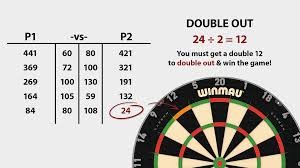
darts rules
Introduction to Darts
Darts is a competitive game of precision, skill, and strategy played by millions of people around the world—from local pubs to international championships. The game is simple in concept: throw small pointed missiles (called darts) at a round board to score points. But beyond that simplicity lies a deep and exciting sport with official rules, different game formats, and high-stakes competition.
Whether you’re a beginner or someone looking to sharpen your understanding of the game, this guide breaks down the essential darts rules, how to score, what variations exist, and how to play like a pro.
Basic Equipment and Setup
Before diving into the rules, it’s important to understand what you need to play a proper game of darts:
- Dartboard: A standard board is 18 inches (45.7 cm) in diameter and divided into 20 numbered sections
- Darts: Each player typically uses three darts, which consist of a tip, barrel, shaft, and flight
- Throwing distance: Players must stand 7 feet 9.25 inches (2.37 meters) from the front of the dartboard (called the oche or throw line)
- Height: The center bullseye should be 5 feet 8 inches (1.73 meters) off the ground
Boards should be hung on a flat wall with enough space around the area to safely accommodate players and missed darts.
Objective of the Game
The main goal in most standard darts games (especially the popular “501” format) is to reduce your score to exactly zero. Each player starts with a set number of points (usually 501 or 301), and they take turns throwing three darts per round to subtract from that total.
But there’s a catch: to win, you must finish the game by hitting a double—the outer ring of the board that doubles a number’s value.
For example, if you’re at 32 points, you must hit a double 16 to win.
Darts Scoring Explained
The dartboard is divided into numbered segments from 1 to 20. Here’s how the scoring works:
- The outer ring doubles the score of that section (e.g., hitting the outer 20 scores 40)
- The inner ring triples the score (e.g., inner 20 scores 60)
- The bullseye is worth 50 points (inner red circle), and the outer bull is worth 25
- A dart that misses the board or hits outside the scoring area counts as 0
- If a dart falls out before scoring is recorded, it doesn’t count
Scoring Example:
- Dart 1 hits triple 20 = 60
- Dart 2 hits outer bull = 25
- Dart 3 hits single 16 = 16
Total score = 101
To learn more about scoring zones, see the official board layout guide from the Professional Darts Corporation (PDC).
Popular Darts Game Types
501 (Standard Game)
The most commonly played format in professional and amateur settings. Each player starts with 501 points and must reach zero, finishing on a double. The first player to do this wins the leg. Matches are played in best-of formats (e.g., best of 5 legs).
301
Same rules as 501 but with a starting score of 301. Often used in faster casual games.
Cricket
A strategic game where players aim to “close out” numbers 15 through 20 and the bullseye by hitting them three times each. Points can be scored if one player has closed a number while the other has not.
More rules on Cricket and scoring options can be found in this overview by Master Darts.
Around the Clock
A fun training game where players must hit each number in order, from 1 to 20. It’s great for practicing accuracy across the board.
Winning the Game: The “Double Out” Rule
In 501 or 301, you must finish on a double. That means your final dart must land in a double ring that equals your remaining score.
Examples:
- If you’re on 40: hit double 20
- If you’re on 10: hit double 5
- If you go below zero, it’s called a “bust”, and your score for that turn is canceled
Planning your final throws to reach a favorable double is part of advanced darts strategy.
Foul Rules and Penalties
To keep play fair, here are common fouls and their consequences:
- Throwing from in front of the oche: foul throw, darts may not count
- Dropped darts that fall past the throw line: cannot be re-thrown
- A player steps over the line while throwing: warning or score cancellation
- Incorrect scoring: must be corrected before the next player throws
In official play, a referee or scorer records every throw to avoid disputes.
Tips for Beginners
Getting into darts is easy, but improving takes practice. Here are some beginner tips:
- Focus on form: Keep your stance stable and your elbow high
- Practice hitting 20s and doubles—they win games
- Use soft-tip darts if you’re worried about wall damage at home
- Invest in a quality dartboard—Winmau Blade 6 is a top choice
- Track your average points per turn (known as “3-dart average”) to monitor improvement
Darts Etiquette and Game Flow
Good darts etiquette is part of what makes the game enjoyable. Players should:
- Stand still and quiet while others are throwing
- Only retrieve darts after scoring is recorded
- Shake hands before and after matches
- Use chalk or digital scoring apps to avoid delays
- Encourage casual play, but respect competitive rules
Conclusion: Darts Is Easy to Learn, Hard to Master
Darts is a game that combines accuracy, strategy, and calm under pressure. With just a dartboard, a set of darts, and a little space, anyone can learn the basics in minutes—and spend a lifetime trying to master it.
Whether you’re playing for fun with friends or dreaming of hitting a 180 on a big stage, knowing the official darts rules is the first step to leveling up your game.






